Abstract
Two motor areas are known to exist in the medial frontal lobe of the cerebral cortex of primates, the supplementary motor area (SMA) and the presupplementary motor area (pre-SMA). We report here on an aspect of cellular activity that characterizes the pre-SMA. Monkeys were trained to perform three different movements sequentially in a temporal order. The correct order was planned on the basis of visual information before its execution. A group of pre-SMA cells (n = 64, 25%) were active during a process when monkeys were required to discard a current motor plan and develop a plan appropriate for the next orderly movements. Such activity was not common in the SMA and not found in the primary motor cortex. Our data suggest a role of pre-SMA cells in updating motor plans for subsequent temporally ordered movements.
Full text
PDF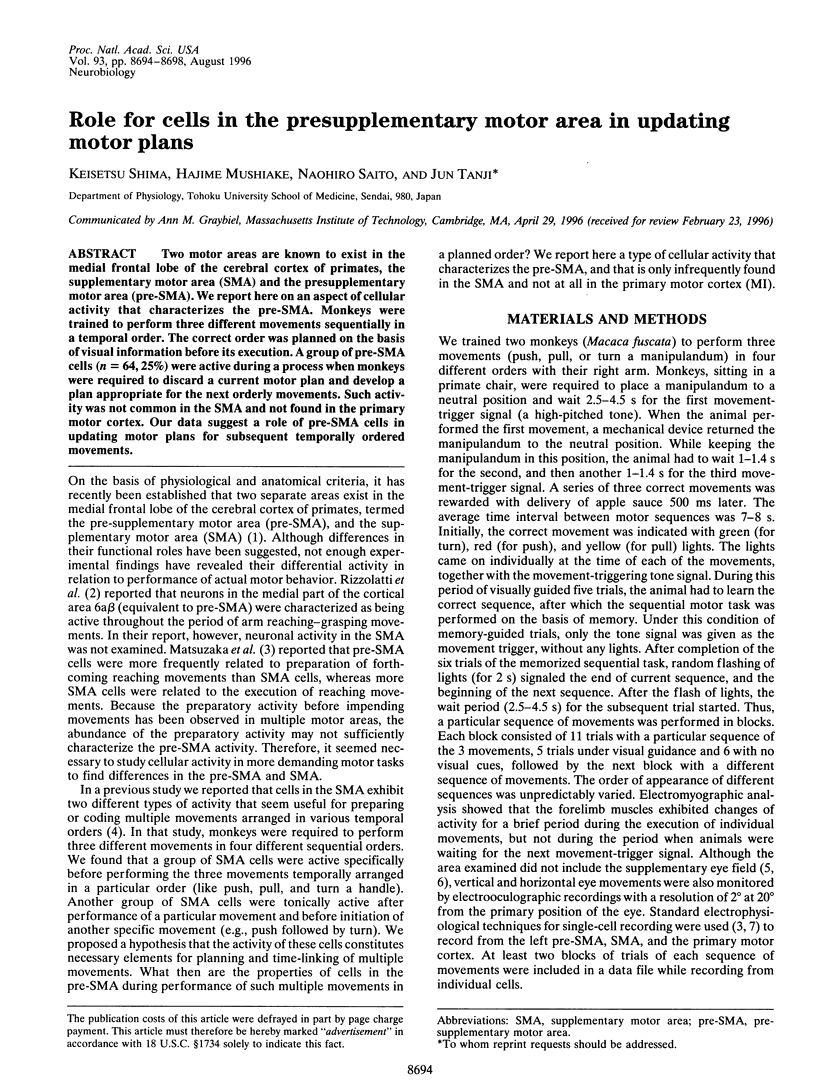
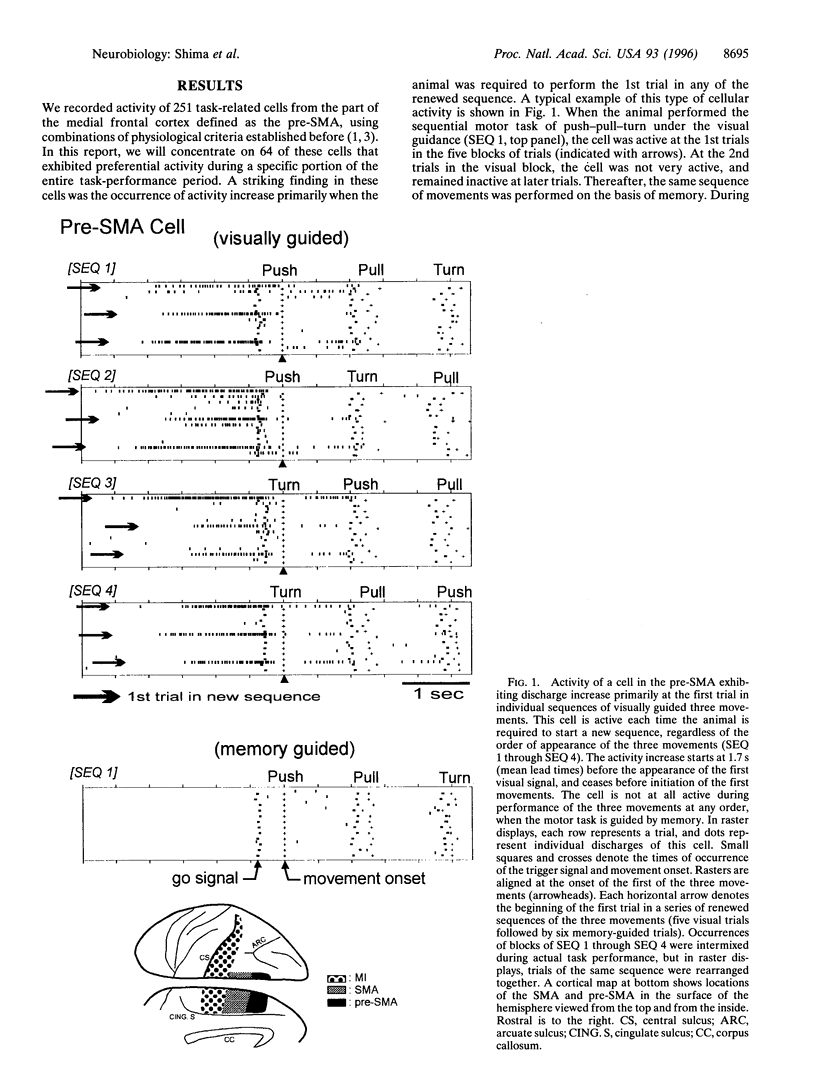
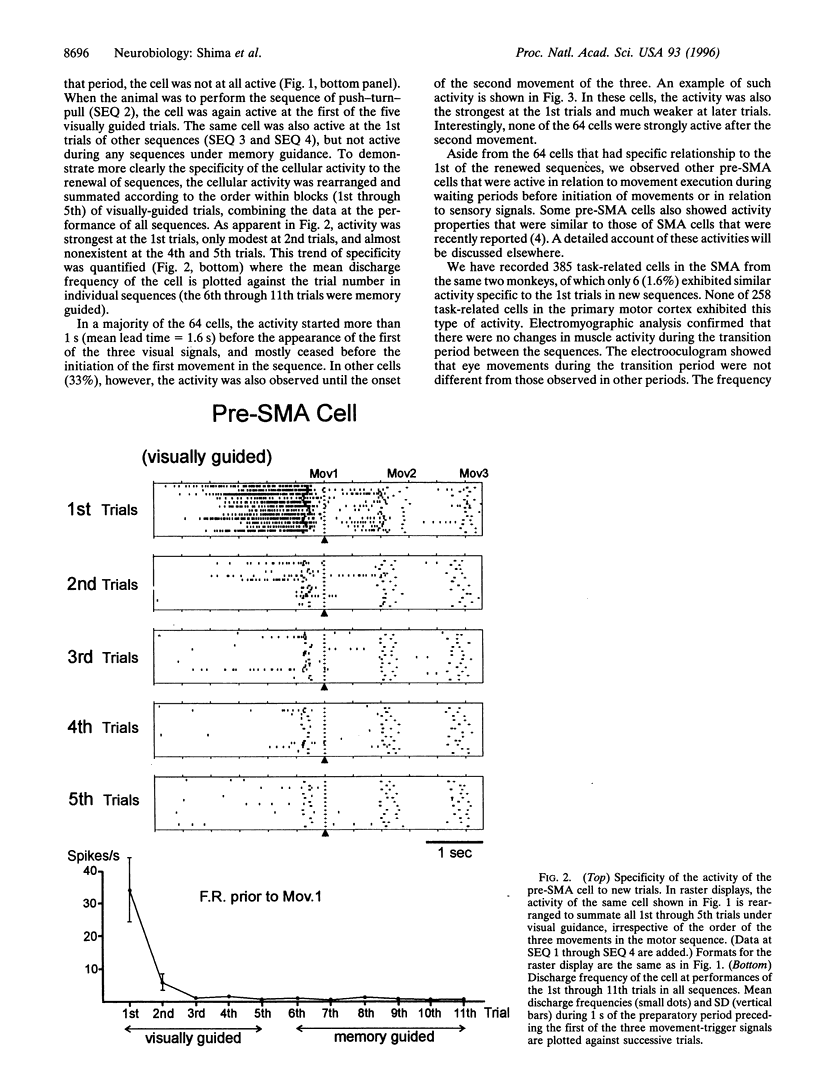
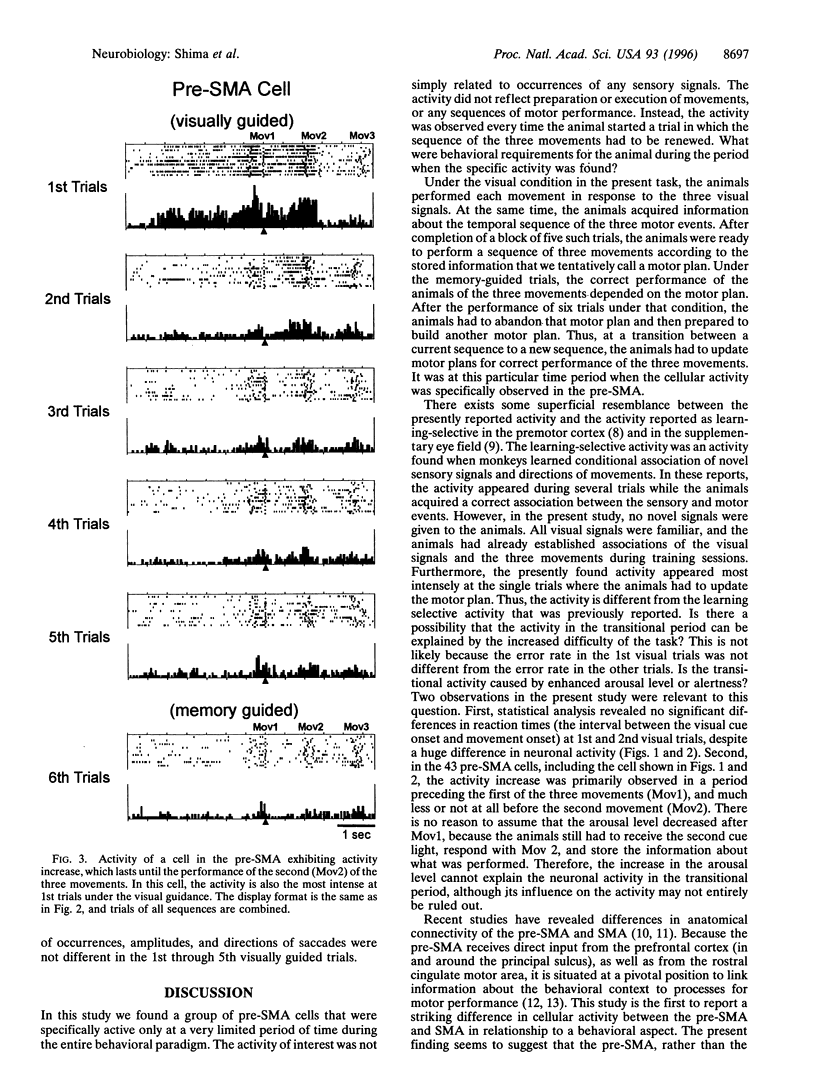
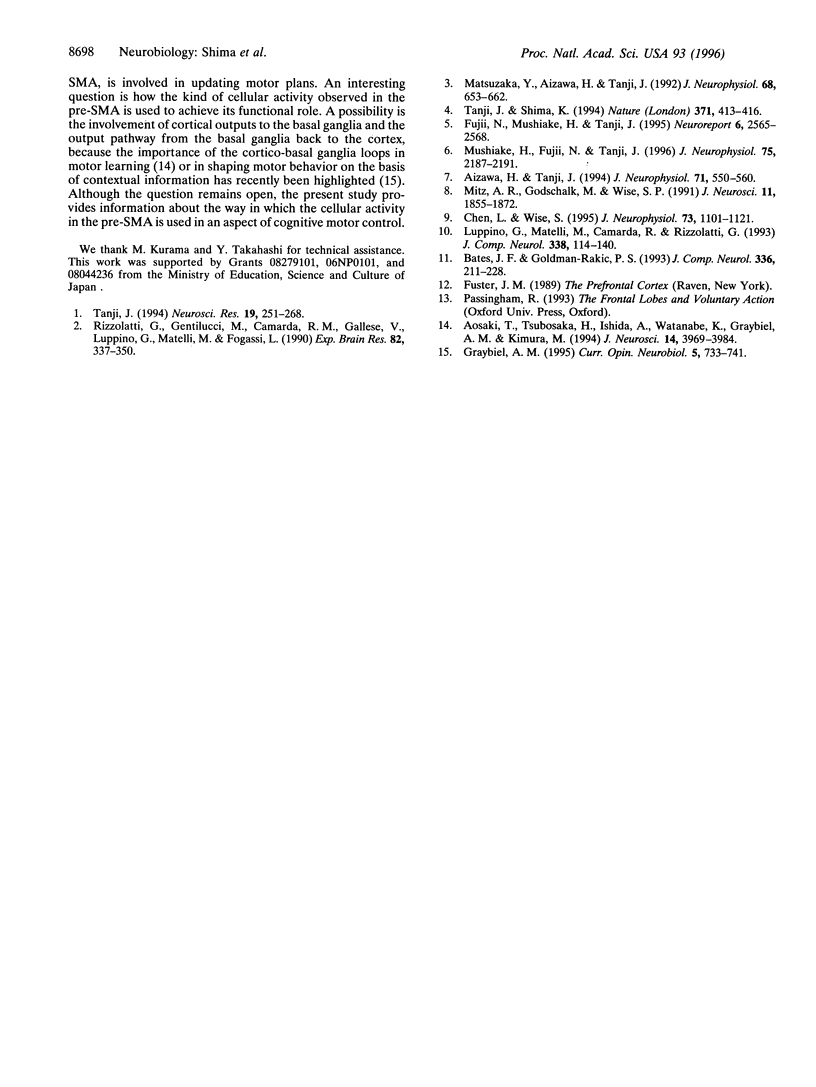
Selected References
These references are in PubMed. This may not be the complete list of references from this article.
- Aizawa H., Tanji J. Corticocortical and thalamocortical responses of neurons in the monkey primary motor cortex and their relation to a trained motor task. J Neurophysiol. 1994 Feb;71(2):550–560. doi: 10.1152/jn.1994.71.2.550. [DOI] [PubMed] [Google Scholar]
- Aosaki T., Tsubokawa H., Ishida A., Watanabe K., Graybiel A. M., Kimura M. Responses of tonically active neurons in the primate's striatum undergo systematic changes during behavioral sensorimotor conditioning. J Neurosci. 1994 Jun;14(6):3969–3984. doi: 10.1523/JNEUROSCI.14-06-03969.1994. [DOI] [PMC free article] [PubMed] [Google Scholar]
- Bates J. F., Goldman-Rakic P. S. Prefrontal connections of medial motor areas in the rhesus monkey. J Comp Neurol. 1993 Oct 8;336(2):211–228. doi: 10.1002/cne.903360205. [DOI] [PubMed] [Google Scholar]
- Chen L. L., Wise S. P. Neuronal activity in the supplementary eye field during acquisition of conditional oculomotor associations. J Neurophysiol. 1995 Mar;73(3):1101–1121. doi: 10.1152/jn.1995.73.3.1101. [DOI] [PubMed] [Google Scholar]
- Fujii N., Mushiake H., Tamai M., Tanji J. Microstimulation of the supplementary eye field during saccade preparation. Neuroreport. 1995 Dec 15;6(18):2565–2568. doi: 10.1097/00001756-199512150-00028. [DOI] [PubMed] [Google Scholar]
- Graybiel A. M. Building action repertoires: memory and learning functions of the basal ganglia. Curr Opin Neurobiol. 1995 Dec;5(6):733–741. doi: 10.1016/0959-4388(95)80100-6. [DOI] [PubMed] [Google Scholar]
- Luppino G., Matelli M., Camarda R., Rizzolatti G. Corticocortical connections of area F3 (SMA-proper) and area F6 (pre-SMA) in the macaque monkey. J Comp Neurol. 1993 Dec 1;338(1):114–140. doi: 10.1002/cne.903380109. [DOI] [PubMed] [Google Scholar]
- Matsuzaka Y., Aizawa H., Tanji J. A motor area rostral to the supplementary motor area (presupplementary motor area) in the monkey: neuronal activity during a learned motor task. J Neurophysiol. 1992 Sep;68(3):653–662. doi: 10.1152/jn.1992.68.3.653. [DOI] [PubMed] [Google Scholar]
- Mitz A. R., Godschalk M., Wise S. P. Learning-dependent neuronal activity in the premotor cortex: activity during the acquisition of conditional motor associations. J Neurosci. 1991 Jun;11(6):1855–1872. doi: 10.1523/JNEUROSCI.11-06-01855.1991. [DOI] [PMC free article] [PubMed] [Google Scholar]
- Mushiake H., Fujii N., Tanji J. Visually guided saccade versus eye-hand reach: contrasting neuronal activity in the cortical supplementary and frontal eye fields. J Neurophysiol. 1996 May;75(5):2187–2191. doi: 10.1152/jn.1996.75.5.2187. [DOI] [PubMed] [Google Scholar]
- Rizzolatti G., Gentilucci M., Camarda R. M., Gallese V., Luppino G., Matelli M., Fogassi L. Neurons related to reaching-grasping arm movements in the rostral part of area 6 (area 6a beta). Exp Brain Res. 1990;82(2):337–350. doi: 10.1007/BF00231253. [DOI] [PubMed] [Google Scholar]
- Tanji J., Shima K. Role for supplementary motor area cells in planning several movements ahead. Nature. 1994 Sep 29;371(6496):413–416. doi: 10.1038/371413a0. [DOI] [PubMed] [Google Scholar]
- Tanji J. The supplementary motor area in the cerebral cortex. Neurosci Res. 1994 May;19(3):251–268. doi: 10.1016/0168-0102(94)90038-8. [DOI] [PubMed] [Google Scholar]


